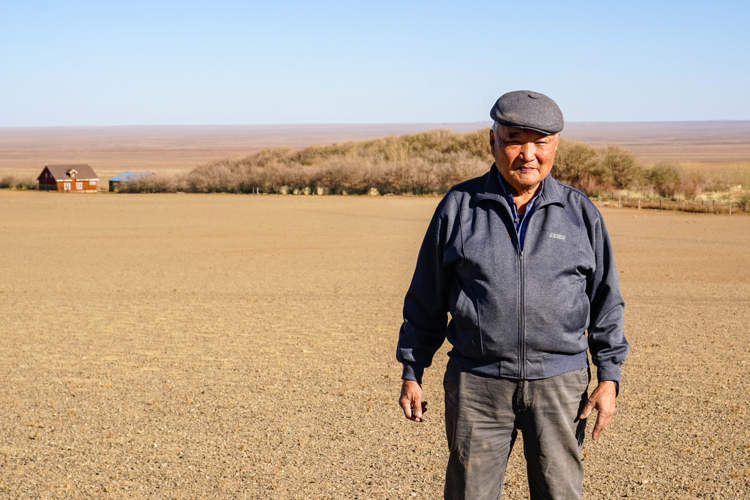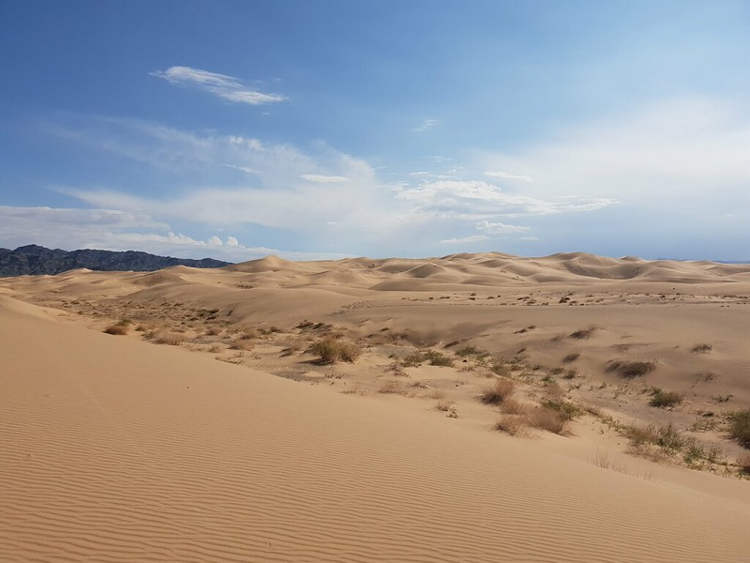An 82-year-old Mongolian man has dedicated the last three decades of his life to nurturing a green oasis in the middle of the Gobi Desert.
Baraaduuz Demchig is often mentioned as living proof that man can fight desertification. His 16-hectare oasis rises up defiantly from the barren Gobi Desert, with no other plant life visible for miles. It’s nothing short of a miracle, but one that has been carefully planned and nurtured over the years by Baraaduuz and his family. It all started in the early 1990s, when the Mongolian farmer decided to plant vegetables in the arid land, only to see his work literally blown away by the wind. That’s when he realized he needed strong trees to protect his garden and started planting elm trees.

Photo: URANCHIMEG TSOGKHUU, GPJ MONGOLIA
According to data from the Mongolian government, desertification affects nearly 98% of Mongolia’s largest province, Umnugovi, and Baraaduuz Demchig land is no exception. In 1992, when he tried planting cabbage on this land, dust storms blew the fragile plants right out of the ground. He realized he needed a wall to stop the strong winds, but not just any wall, a living one…
Baraaduuz started growing elm trees around his Gobi desert garden and the results were nothing short of spectacular. Not only did his garden flourish, but so did his little tree plantation, and people started taking notice.
“The first year (1992) was difficult: it was a windy and sandy year. But in the second year, the trees were tall enough to protect my vegetables,” Baraaduuz told Channel News Asia. “I became a believer in trees and started to love trees. And people started to notice and asked me to give them trees and I started to plant more.”

Photo: Richard Mortel/Flickr
Although his 16-hectare seems insignificant when compared to the seemingly endless Gobi Desert, Baraaduuz Demchig estimates that he has grown over 400,000 trees on his land, many of which were sold to farmers interested in following his example.
Looking at the barren wasteland surrounding Baraaduuz’s green oasis, it is painfully obvious that few plants could grow in this plant without care and protection. And yet, the Mongolian farmer has been able to grow sea buckthorn, raspberry and other fruit shrubs for several decades.
“The ravine that I am in, in the winter it reaches -30 degrees Celsius, and in the summer it reaches 30 degrees Celsius. Two extremes, one very cold and one very hot. So if a tree is growing there, it proves a tree can grow anywhere,” the 82-year-old said.
Baraaduuz Demchig is too old to care for the oasis, so the torch has been passed to his grandchild, but the old farmer’s ambition and persistence have become the stuff of legends among communities bordering the Gobi Desert, and Mongolian authorities often mention him as an example.
Baraaduuz and his family aren’t the only ones fighting the encroaching Gobi Desert. In neighboring China, Wang Tianchang and his family have become poster children of the anti-desertification movement, thanks to their success in adapting to the harsh desert conditions and creating their own green oasis.












